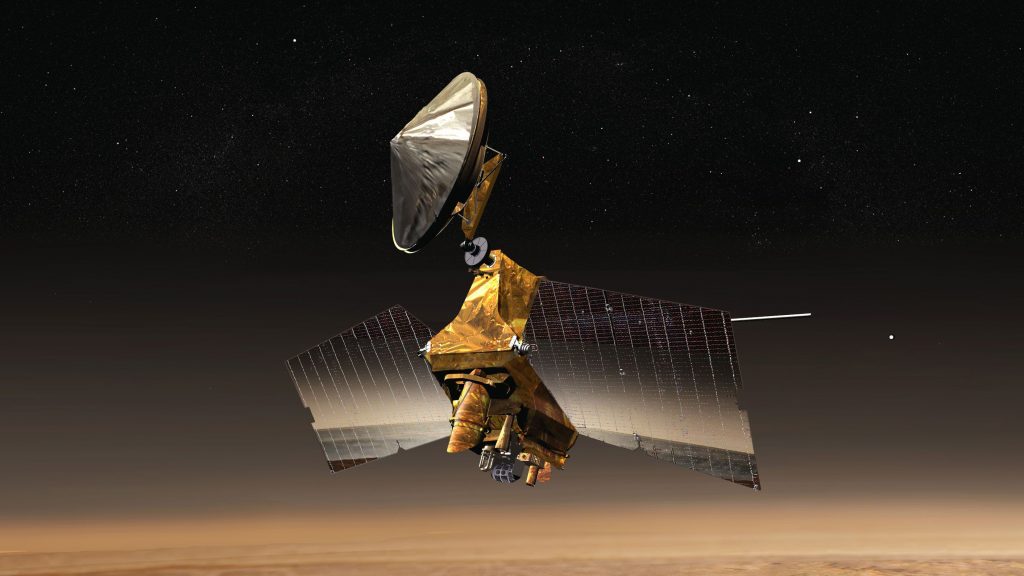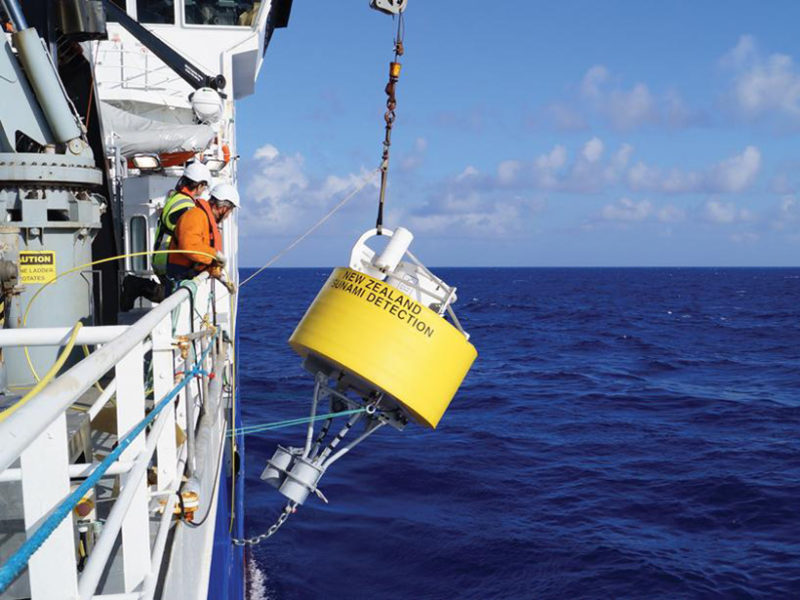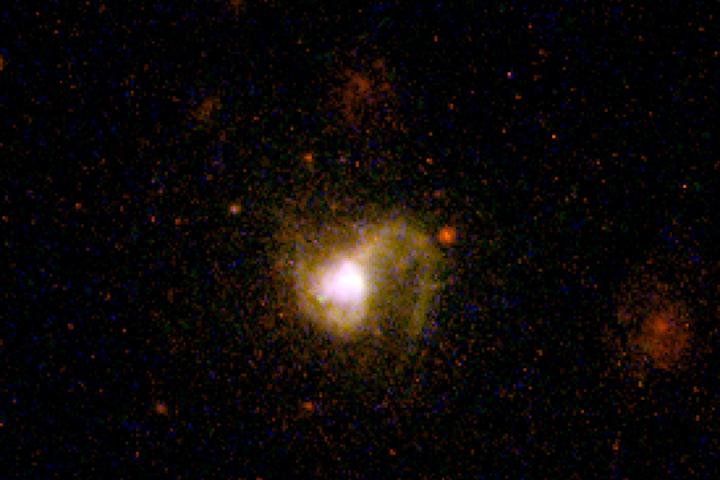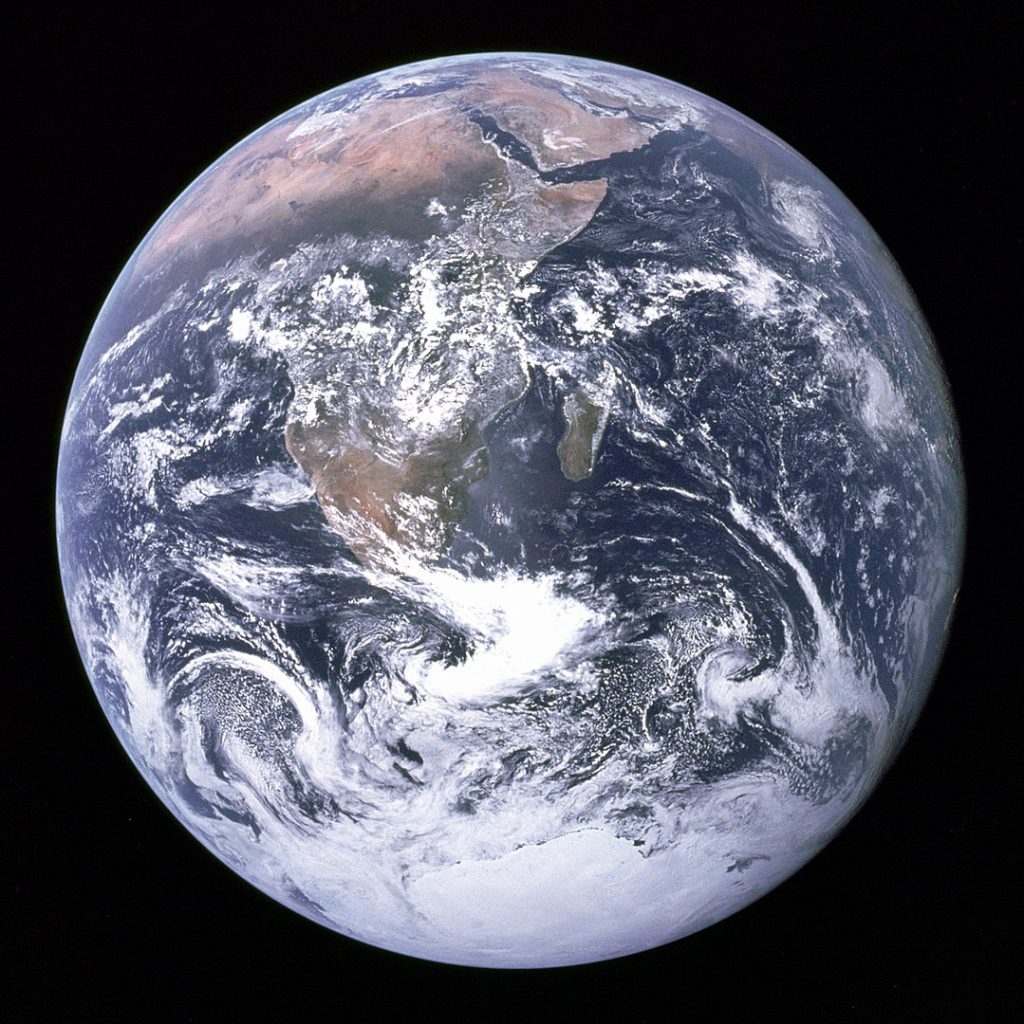On March 5, 2021, three separate, large earthquakes occurred within hours of each other near New Zealand, and all three produced a tsunami. The resulting changes in wave height were recorded with special buoys. Plus, a radar blackout at Mars, a giant planet growing, small galaxies in the early Universe, and what even is a day?
Media
Transcript
Hello and welcome to the Daily Space. I am your host Dr. Pamela Gay.
And I am your host Beth Johnson.
And we are here to put science in your brain.
There are a lot of “blink and you missed it” things that are hard to see here on Earth. From the site of a particularly bright meteor during a star party to the acrobatics of a dolphin leaping out of the water on a ferry trip, if you are looking the wrong way and at the wrong moment, you miss everything.

In looking at the sky, what it means for something to be short-lived is a little different, but the idea is the same. As we scan across the sky, we see lots of fully formed stars, which can live for billions of years. We see a fair number of things that last hundreds of millions of years, but the shorter-lived the phenomena, the harder it is to find an example in the sky.
Catching planets in the process of forming is one of those short-lived phenomena we are struggling to catch. This is a double problem: we have to catch a short-lived phenomenon, and we have to catch it with just the right geometry that we can see the planet separately from the star. Of the 4,000 exoplanets of all ages so far found, only fifteen have been directly imaged by a telescope, as a dot beside a star.
Now, with a combination of hard work and a bit of luck, a still-forming planet has been imaged orbiting an orange dwarf star, PDS 70, just 370 light-years from Earth. This is one of three planets in this system, and according to researcher lead researcher Yifan Zhou: This is the youngest bona fide planet Hubble has ever directly imaged.
Zhou developed novel data processing techniques that allow the research team to carefully separate the light from the star and the planet, allowing the team to determine the planet is continuing to slowly grow as it circles at a Uranus-like distance from its star. Now, we just need to find a whole bunch more of these at different ages so we can measure growth rates at a variety of different ages. This work is published in The Astronomical Journal.
Like Beth said, short-lived means a lot of different things in the context of the universe. Planet formation goes on for millions of years, and the effects of phenomena like solar flares might last for only hours or maybe even minutes or seconds.

Researchers studying Mars using radars on both Mars Express and the Mars Reconnaissance Orbiter have periodically experienced weird blackouts in their data where radar returns stop returning. Since studying these weird blackouts wasn’t the goal of taking radar data, understanding what is causing this has been a back burner problem that may finally be understood.
In research led by Mark Lester and including some of our Planetary Science Institute’s researchers, Than Putzig and Matthew Perry, it has been determined that solar energetic particles can ionize the lower atmosphere on Mars, and this partial ionization prevents healthy radar returns. Basically, an active Sun means no radar science for SHARAD and MARSIS radar scientists. While this is no big deal as the research can just be done at a different time, it is problematic because if the radar can’t get through, this means that communications with future robots and humans will also be disrupted periodically by solar activity. This is just one more problem that will need to be sorted if we want to keep humans safe on Mars.
The words “short” and “rare” really are a matter of context. Female PhD astronomers (hi, Pamela), they’re rare but we see them. Humans, we’re short-lived, but we see them (still there, Pamela?) When it comes to the shortest lived and rarest events, I have to say the moment that a bunch molecules become a living cell may be one of the rarest and shortest lived things we really wish we understood.

While I doubt we’ll ever catch life naturally coming into existence, we’d like to figure out how to force this to happen in a lab, and doing this lab experiment requires researchers to understand where the stuff of life actually came from. In new research, published in Science Advances and led by Yoshihiro Furukawa, researchers announce that the organic chemistry necessary to create the amino acids that build life could have used widely available materials found in the early solar system. This work required the team to study the compositions of meteorites that contained essentially locked samples of the building blocks of planets. This allowed them to see what kinds of reactions took place, and hint at what reactions – formose-type reactions if you want to know – might have led to us.
As a planetary geologist, I’m more well versed in ways of destroying life than in creating it. This next story is your daily reminder that the Universe is trying to kill us, and it doesn’t even need rocks from outer space to do so. No, no. The Universe can rely on mother Earth to do her fair share.

When I taught a natural hazards class, one of the things I had to explain to my students were the hazards that go along with earthquakes. After all, I live in earthquake country, but beyond the normal shaking and rolling land waves we get here in California, there is one type of hazard our quakes aren’t generally responsible for: tsunami. These deadly events are usually the result of subduction earthquakes, those ones where one tectonic plate is going under another plate.
Subduction earthquakes are common around the Pacific Ocean in what is known as the Ring of Fire. The same plate interactions that cause those volcanic arcs we talked about a couple of weeks ago also come along with massive quakes. And when one of those happens, the upward thrust of the topmost plate causes water to also be displaced upward. That water has to go somewhere to keep everything even, and like ripples in a pond, it spreads out from that point of origin, creating a tsunami.
As the tsunami approaches the shoreline, the water pulls back from the show while the wavefront gets compressed in the shallower depths, building up what we think of as a wall of water. In the 2011 Tōhoku earthquake, the wave height at the shore was on the order of 10 meters, causing massive amounts of destruction along the coast and even farther inland. The water will keep moving, and because these huge ripples bounce, they’ll go back and forth for a while. The 2004 Boxing Day tsunami occurred as a result of a quake off the coast of Sumatra, and over two hundred thousand people died as a result, in countries as far away from the epicenter as Kenya and Tanzania.

Unfortunately, we tend to learn lessons only when they are particularly harsh, and scientists realized that this extreme death toll was partially due to the lack of warning systems in place in the region in 2004. So they quickly increased the number of Deep-ocean Assessment and Reporting of Tsunamis or DART buoys in the region and created a network that now includes over 60 of the floating sensors. This includes twelve new buoys over the Kermadec Trench near New Zealand, which is a particularly fast-moving subduction zone and prone to frequent, high-magnitude earthquakes.
And they got to “witness” in the resulting data this year an extremely rare event: a triple tsunami as a result of three closely spaced, very large earthquakes, all over magnitude 7.0. These quakes occurred on March 5, 2021, off the coast of New Zealand, all within 1,000 kilometers and several hours of each other. Each quake spawned its own tsunami, and the buoys recorded the changes in the wave heights as each event passed by. Since the data is analyzed in real time, local authorities were able to keep the public informed of any pending threats and to cancel the warnings when the threat had passed. Because these buoys are in place, authorities canceled the alert more than four hours earlier than previously possible.
And these buoys don’t just save lives and time in the South Pacific. The tsunami generated by all these subduction earthquakes can travel swiftly across the Pacific and Indian Oceans, traveling at speeds in excess of 800 kilometers per hour and reach distant shores in countries like Chile and the United States. During that 2011 quake, several lives were lost in California, and the property damage in marinas along the coast was extensive. Here’s hoping for more buoys in more places to save more lives.
From Earth destruction, let’s jump to universe construction.
A recurring theme here is “how did everything start?” Like, we know there was a Big Bang, things expanded and cooled for 400,000 years, and then stars and galaxies started doing their thing, and their light cleared out the universe. Where we get stuck is did those galaxies most responsible for clearing out the universe grow from the massive collapse of stuff into massive galaxies or through the formation of myriad tiny galaxies?

We know galaxies formed both ways. The universe is all about “yes and,” but in this particular whodunnit, we’re learning that while there were massive galaxies out there clearing out their surrounding gas and ionizing everything with ultraviolet starlight, it may have been the small galaxies, scattered everywhere, that actually did the bulk of the work.
Researchers led by Nathan Eggen and publishing in The Astrophysical Journal show that one tiny galaxy is clearly doing a lot to blow out the universe. This galaxy is POX 186. It’s a compact system with about 100,000 solar masses of massive stars. Where it’s located, just a couple of billion years after the formation of the universe, its light is ionizing the neutral gas all around it. Part of how it is doing this isn’t just the ultraviolet light.
The stars, as they explode into supernovae, are pushing out the gas. Their ultraviolet light is breaking free of the galaxy, and all around it, the universe is becoming transparent. Now, little galaxies like this were the most common. Just like a single bonfire will do a really good job of lighting up one part of a field; if you fill that field with a hundred campfires, you can light so much more. And it looks like these little galaxies, like POX 186, lit not just “so much more” but everything. Thanks to them, we can look back to the earliest moments of the visibly transparent part of the universe a few billion years after it started. Once the JWST maybe launches, it will be able to see just what was forming.
What is time anyway? This morning, as I worked on this show, I looked around my office and realized it is fossilized to January 2020. Calendar on the wall: December 2019. Yearly passes attached to lanyards: 2019-2020 year. Everything just kind of stopped as every day became blursday.

As humans, we measure the passage of time in different ways; many humans consider “today” to be from the moment of waking to the moment of sleeping, even if that “today” spans multiple calendar days. A year for a teacher or professor is September to August. Time, how we divide it up at least, is just an arbitrary set of decisions. For the purposes of science, a day is the amount of time it takes for a single point on a world to go from noon to noon. Except when it isn’t.
Here on Earth, we rotate so that the Sun moves across our sky daily, for folks not at the poles, and we have a close to 24-hour day. For Uranus, the planet is flipped sideways, so the solar day and the orbital period are the same (84 Earth years), but relative to the stars, a day would be measured in Earth hours. Of course, exactly how you measure that on a gas world is a bit hard. What do you measure it against? With Saturn, folks have decided to measure a day based on the ripples its gravity creates in the rings. By the way, Saturn’s day, it’s ten Earth hours and 33 Earth minutes long. Gas planets… they are just hard to sort.
Filled under “why is this so hard?”, it turns out that cloud-covered solid planets can actually hide the length of their day pretty effectively. While Venus is in many ways a twin to Earth – similar size, similar original composition – the world had a rather catastrophic history that isn’t explained by just its closer distance to the Sun. Understanding what happened actually requires understanding how Venus rotates and how that reflects its internal structure. The thing is that we can’t see its surface.

While orbiting satellites can get some information on Venus’s day length from radar images, their fast orbits and the influence of Venus’s shape on their orbits make precision hard. In fact, past measurements didn’t match each other. So scientists started hitting Venus with radar from Earth, and over long periods found that: The new radar measurements show that an average day on Venus lasts 243.0226 Earth days — roughly two-thirds of an Earth year. What’s more, the rotation rate of Venus is always changing: A value measured at one time will be a bit larger or smaller than a previous value. The team estimated the length of a day from each of the individual measurements, and they observed differences of at least 20 minutes.
When your average day is 243 Earth days, a variation of twenty minutes actually isn’t a lot, but how Venus got that way is a serious mystery that we can’t solve today.
And speaking of things we can’t do today, we are not celebrating CosmoQuest-a-Con today. We are, however, celebrating it for three days in July. Go get your tickets now. Get all the information and find out more at CosmoQuest.org. This is going to be a three-day celebration of space, science, and creativity all packed together. We hope to see you there then.
For now, this has been the Daily Space.
Learn More
Jupiter-sized Exoplanet Caught During Formation in Hubble Image
- NASA press release
- “Hubble Space Telescope UV and Hα Measurements of the Accretion Excess Emission from the Young Giant Planet PDS 70 b,” Yifan Zhou et al., 2021 April 29, The Astronomical Journal
Radar Blackouts at Mars and Solar Energetic Particles
- “Energetic particles and radar blackouts at Mars,” M. Lester et al., 2021 April 19-30, EGU General Assembly 2021
Amino Acid Building Blocks Found in Ancient Meteorite
- EurekAlert release
- “Synthesis of 13C-enriched amino acids with 13C-depleted insoluble organic matter in a formose-type reaction in the early solar system,” Yoshihiro Furukawa, Yoshinari Iwasa, and Yoshito Chikaraishi, 2021 April 28, Science Advances
Rare Triple Tsunami Recorded Off Coast of New Zealand
- Eos article
Small Galaxies Turn Out to Be Important in Early Universe
- University of Minnesota press release
- “Blow-away in the Extreme Low-mass Starburst Galaxy Pox 186,” Nathan R. Eggen, Claudia Scarlata, Evan Skillman, and Anne Jaskot, 2021 April 29, The Astrophysical Journal
What Even is a Day? How About on Venus?
- How Long Is One Day on Other Planets? (NASA)
- UCLA press release
- “Spin state and moment of inertia of Venus,” Jean-Luc Margot et al., 2021 April 29, Nature Astronomy
Credits
Written by Pamela Gay and Beth Johnson
Hosted by Pamela Gay and Beth Johnson
Audio and Video Editing by Ally Pelphrey
Content Editing by Beth Johnson
Intro and Outro music by Kevin MacLeod, https://incompetech.com/music/


 We record most shows live, on Twitch. Follow us today to get alerts when we go live.
We record most shows live, on Twitch. Follow us today to get alerts when we go live.